The Rooster and Chicken Statues in The Temples Of Ayutthaya, Thailand


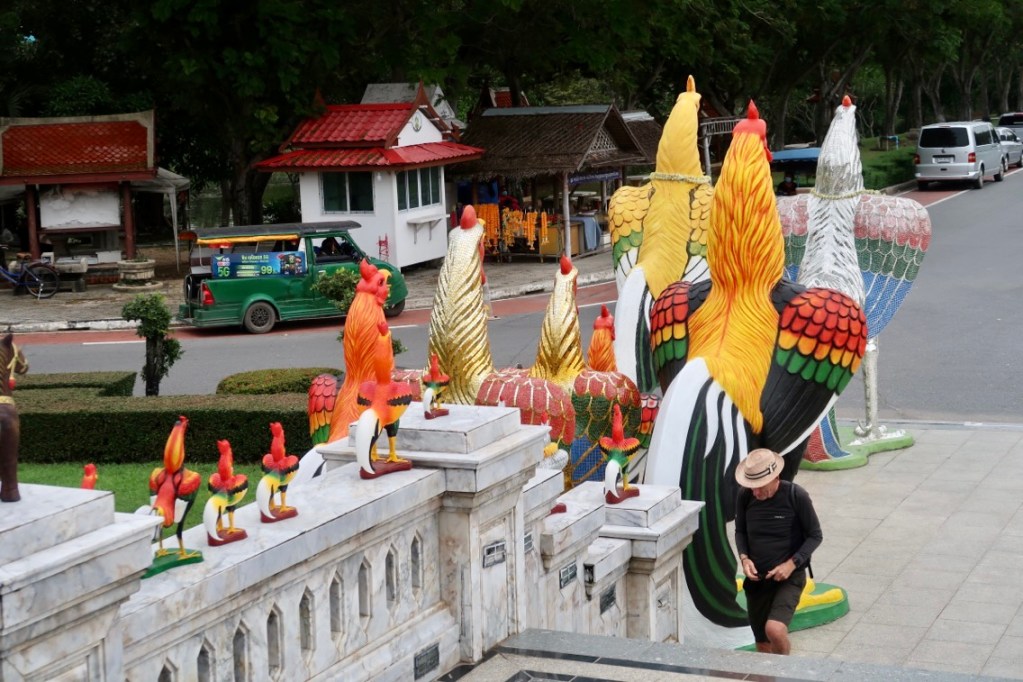











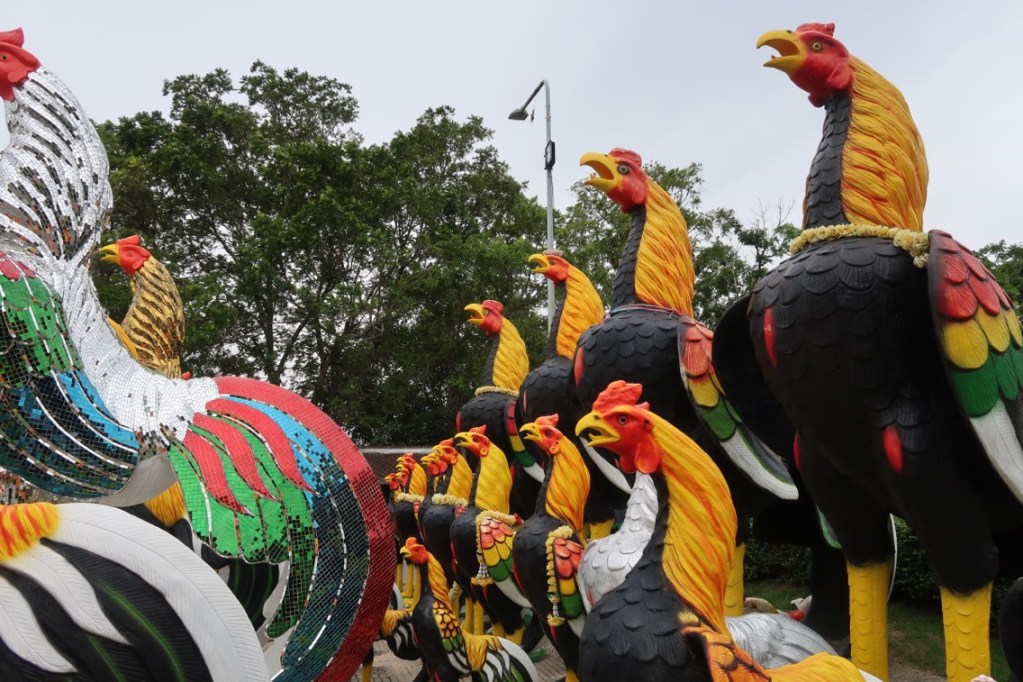
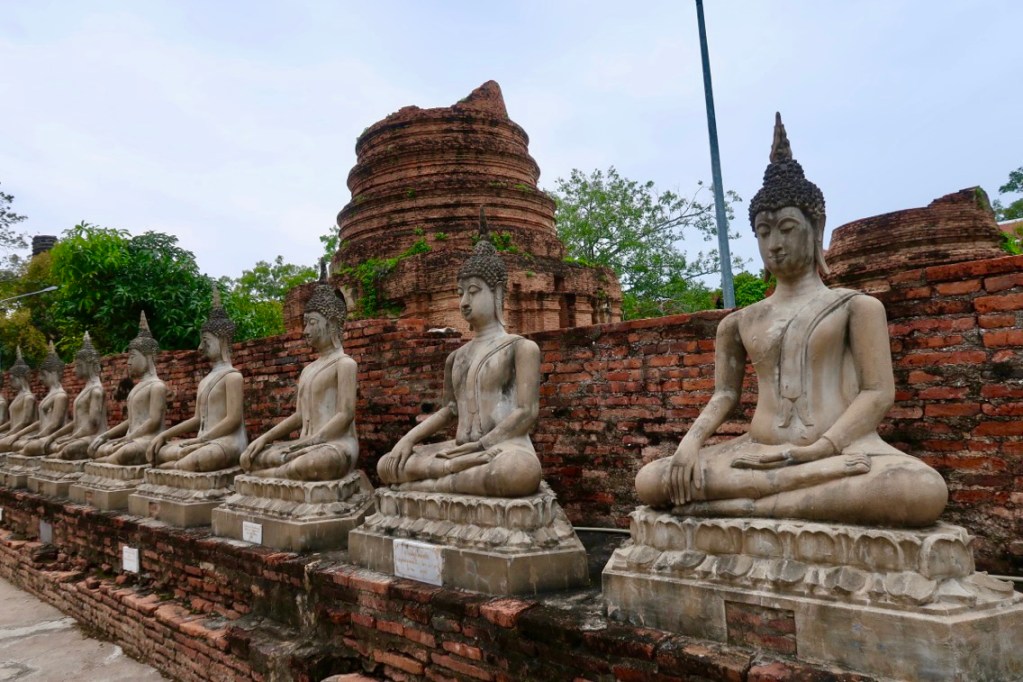



















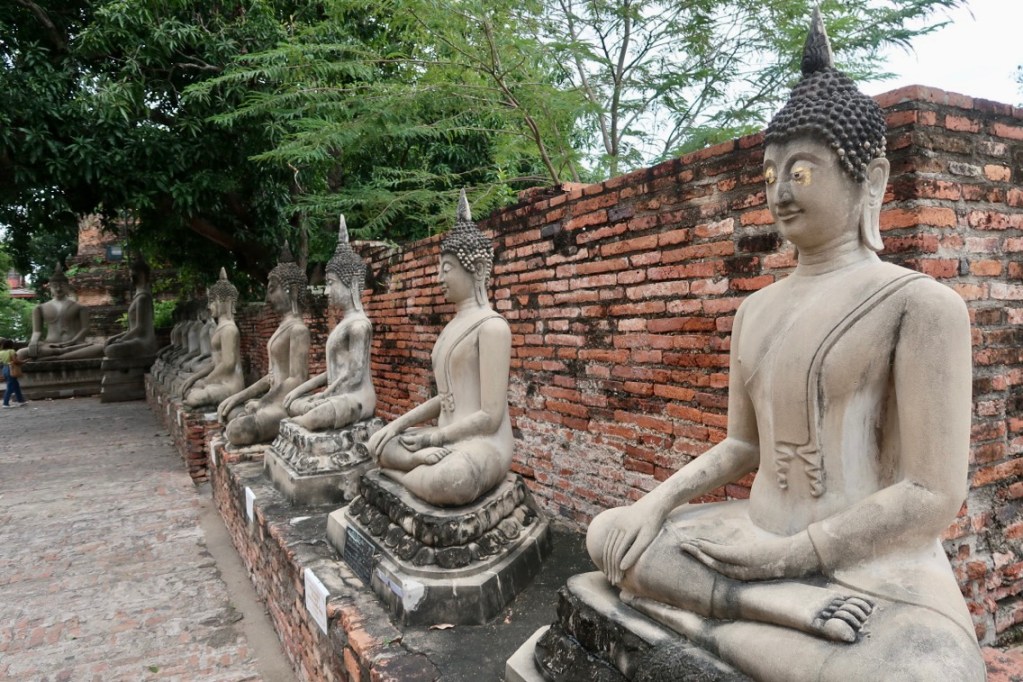


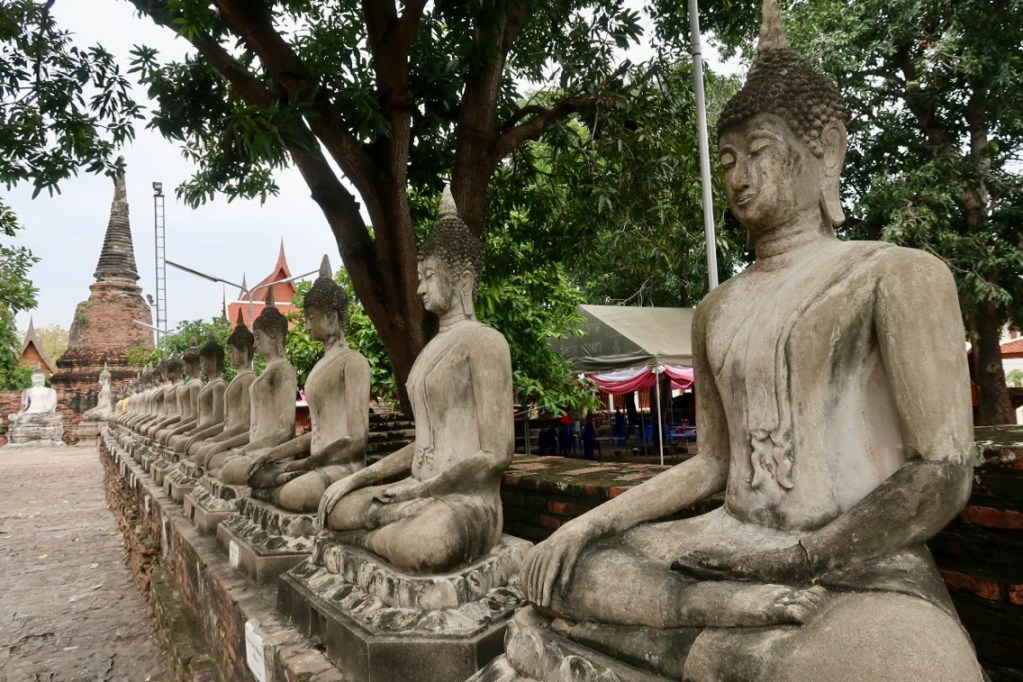

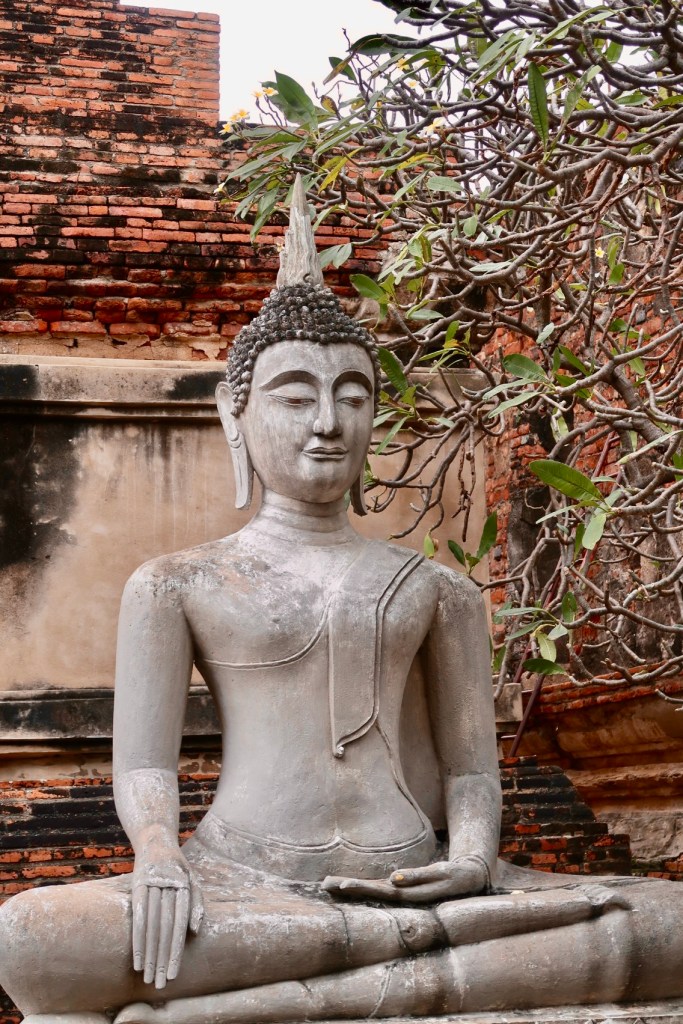

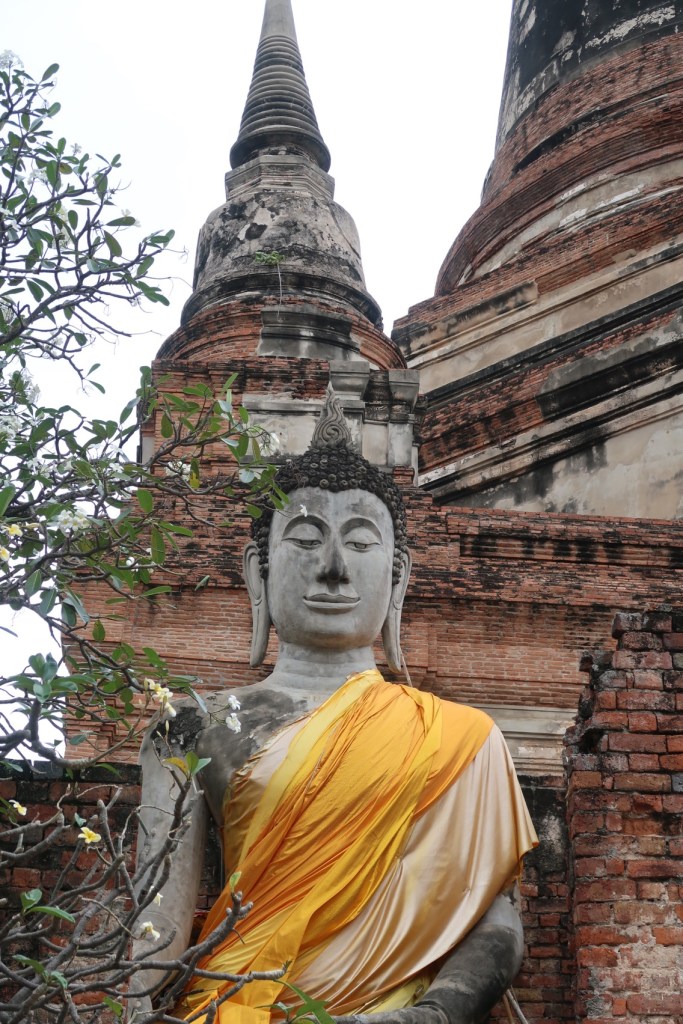
















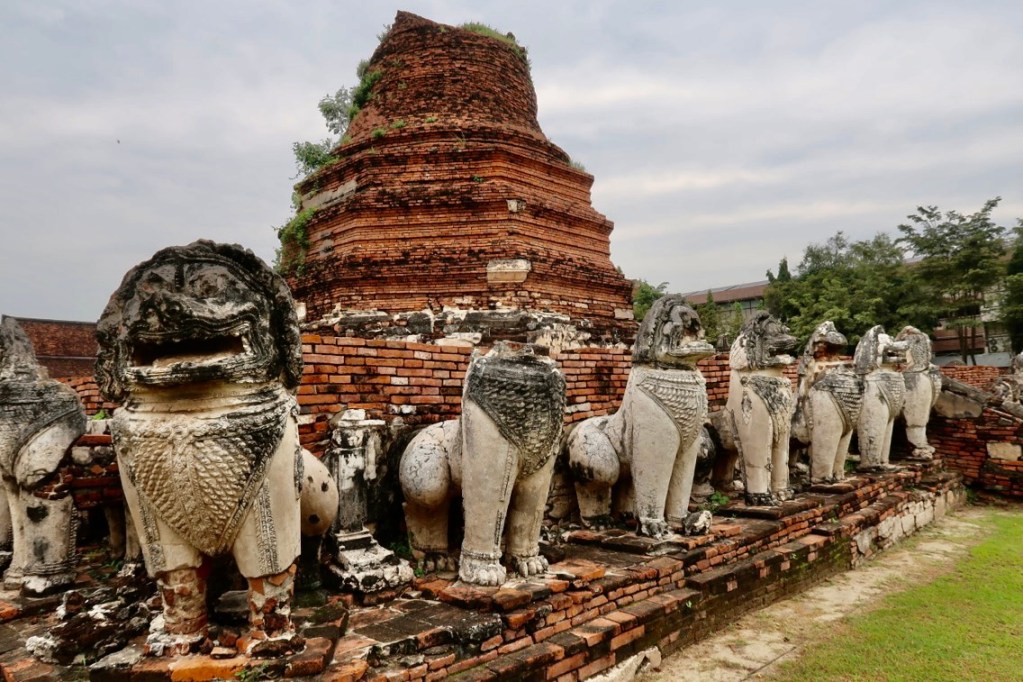


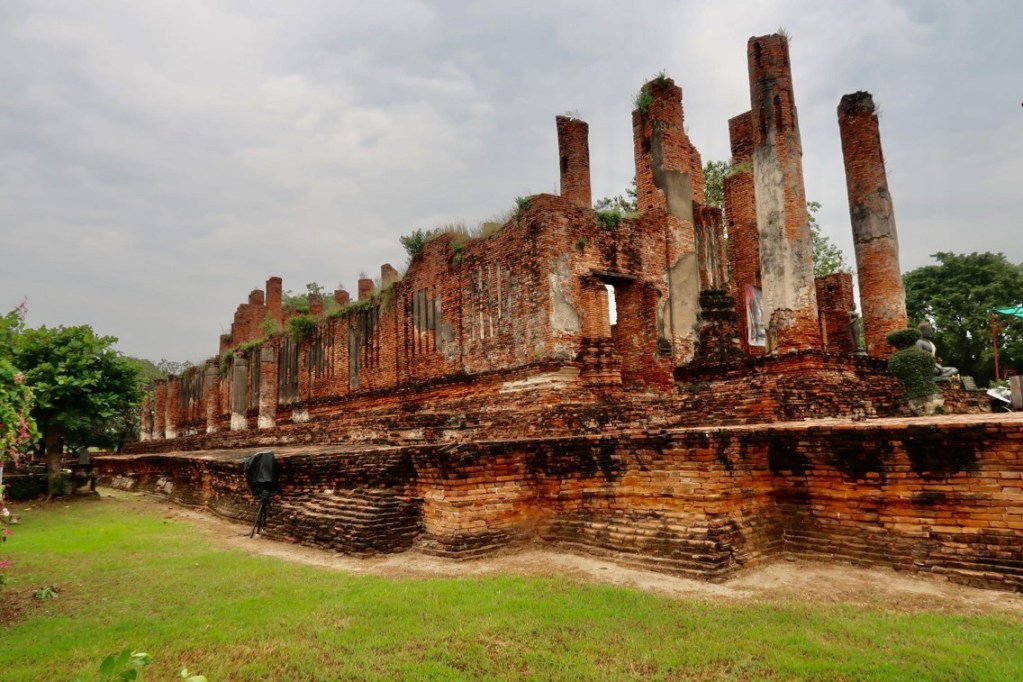







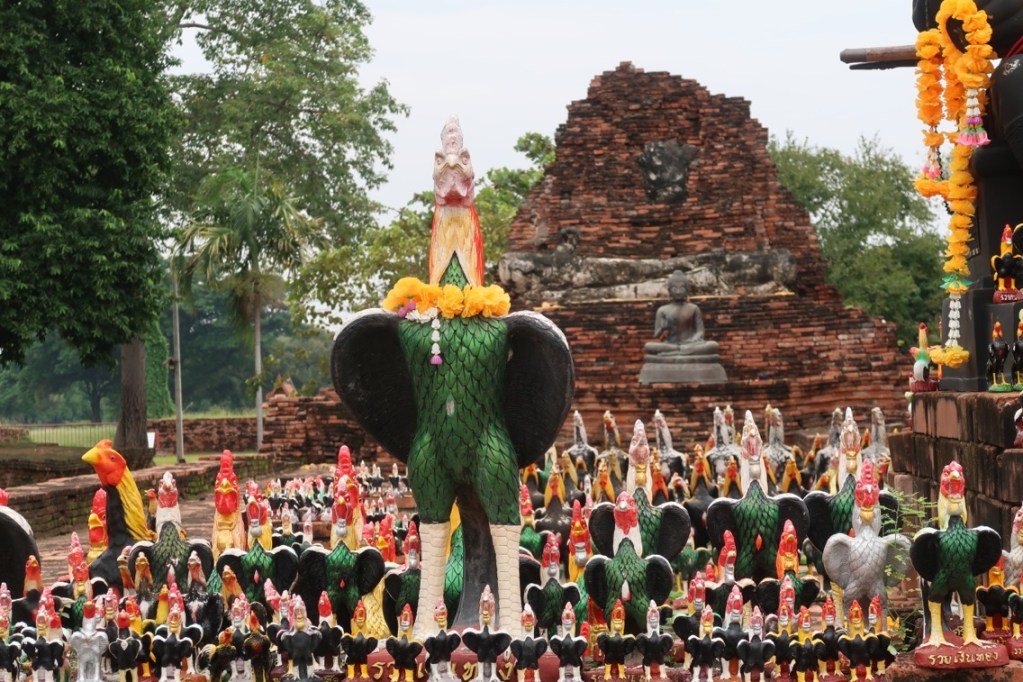

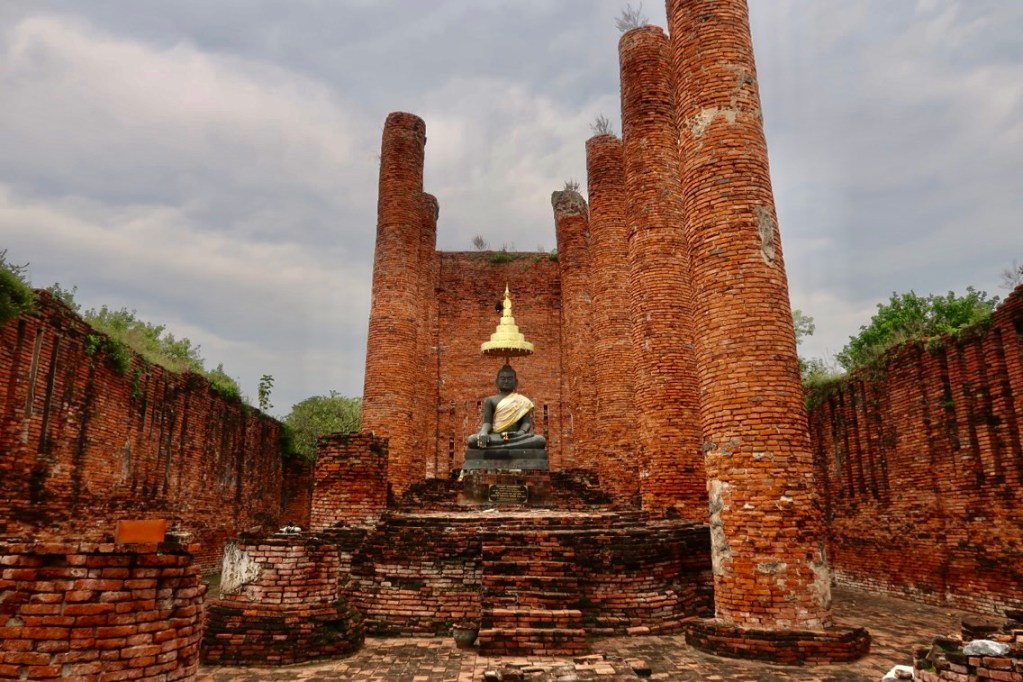

The Rooster and Chicken Statues in The Temples Of Ayutthaya, Thailand
Visitors to Ayutthaya, the ancient former capital of Siam, might be amazed to see that in some temples, there are more statues of colorfully painted roosters and chickens than statues of the Buddha.
Some of these roosters and chickens are tall and big, double a human’s size, and are elaborately decorated with mirror tiles or gold inlays in beautiful detail.
I had never seen before that many roosters and chickens in Buddhist temples anywhere in the world, so naturally, I was intrigued by this.
In some temples, old ladies were selling small, crudely painted roosters, for tourists who wish to offer a prayer and add their own name on a plastic rooster who will live in the temple until the weather disintegrates it.
So why do so many people bring chicken statues or offerings, and place necklaces of flowers on the necks of chickens and roosters in the temples….
My bafflement was because in Tibetan Buddhist teachings, the rooster is one of the three animals that represent the three deadly sins.
The three deadly sins or poisons, are ignorance, attachment, and aversion.
They are the primary causes that keep sentient beings trapped in Samsara, the cycle of death and rebirth to which all human beings are confined, until they break through Samsara by attaining Enlightenment.
These three poisons are also believed to be the root of all Kleshas, the mental states that cloud the mind.
With a cloudy mind, humans do not see clearly and thus manifest inner pain, negative emotions and unwholesome actions.
The Kleshas includes fuzzy states of mind such as anxiety, fear, anger, jealousy, attachment, depression, and more..
The three animals that represent the poisons in the human mind are the pig,(representing delusion or confusion, bewilderment, ignorance), the Rooster, (representing territorial attachment), and the snake (representing anger, hate, hostility and aversion.)
But Tibetan Buddhism is not practiced in Thailand.
In Thailand, people believe that roosters and chickens bring good luck and blessings of prosperity into their lives.
Roosters are considered protectors against misfortune and demons.
Having a painting of a red rooster in your home is believed to offer protection against fire.
Placing a white rooster in an empty coffin is believed to keep the angel of death away, and protect the family from the demons of sickness.
In Chinese mythology, which is mixed deeply into the Thai Culture, the rooster represents consistency and honesty, for its faithful morning calls every single day, that mark the arrival of daytime.
Roosters also represent masculinity and strength, as well as aggression, fearlessness and virility, while chickens represent femininity, motherhood, comfort, and abundance, as they consistently and abundantly lay eggs every day.
More specifically in Ayutthaya, there is a historical connection to the appearance of roosters and chickens in the temples.
Burma and Thailand were engaged in a long and deadly war during the 16th century.
The Thai Prince Naresuan was taken as a prisoner to Burma after Ayutthaya, the capital city, fell in defeat to the Burmese King Bayin Naung.
After five years of war which depleted both countries, legends say that the Thai Prince made a bet with the Burmese prince, that Ayutthaya would be freed from Burmese rule, if Naresuan's rooster emerged victorious in a cock fight between both ruler’s favorite roosters.
Prince Naresuan's rooster won the bet, humiliating the Burmese prince who remained true to his word.
Whether the story is true or not, or if the Burmese prince was ready to end the war anyway, the story was immortalized in a popular movie about King Naresuan.
Suddenly, chicken and rooster statues began to appear mysteriously at temples across Ayutthaya.
They are now mostly concentrated in temples associated with this royal warrior (Wat Worachet, Wat Worachetharam, Wat Yai Chai Mongkhon, and the king’s memorial statue.)
The most devoted worshippers are those who were born in the Zodiac year of the rooster.
They bring offerings of more ornately decorated roosters as they seek blessings and good fortune in their lives.
From Ayutthaya with love,
Tali